Since a few years, LEGO has been releasing the ‘Icons Botanical Collection‘. 18+ sets with flowers, plants and trees to introduce more adults into the joy of LEGO building. The sets really are unique in the LEGO product portfolio. The main aim appears to be releasing very realistic copies of the natural counterparts. At the same time, most of these sets are really interesting parts packs! This way they not only appeal to people new to LEGO but also longstanding fans.

I’ve bought quite a few of these botanical sets over the years myself. Until this one I sorted them out straight away, not bother building. But this time I wanted to have a look myself what these sets are all about. Are they any fun to build?

So what do we get? We get 9 tiny plants in ‘terracotta’ pots. Instructions are divided in 3 booklets and 1-3 people can build these simultaneously. Every booklet has 3 pots, small/medium/large in size. Each time the pots of similar size are constructed with the same techniques. Only some small details like color choices (invisible from the outside) make a slight difference between them.
The full list of included plants:
- False Shamrock (Oxalis Triangularis)
- Jade Plant (Crassula Ovata)
- Laceleaf (Anthurium andraenum)
- Venus Flytrap (Dionaea muscipula)
- Red Sundew (Drosera brevifolia)
- Yellow Pitcher Plant (Sarracenia flava)
- Britton’s Liveforever (Dudleya brittonii)
- Eastern Prickly Pear (Opuntia humifusa)
- Pincushion Cactus (Mammilaria crinita f. zeilmanniana)
In total the set consists of 758 pieces, divided over 6 numbered bags. The Recommended Retail Price (RRP) is €/$49.99 or £44.99.
Part selection
So this might be my favourite criterium to judge a set. And I really can’t think of many better sets. There’s a lot of recoloured parts, parts in bulk quantities or rare parts included. In this picture you can see all newly recoloured or rare (included in 3 sets or less) parts. It’s quite an impressive amount! and quite universally usable as well.

Other than new and recoloured parts, bigger quantities are also what defines a great parts pack. Below is the list of parts with the biggest quantities in this set. Unsurprisingly it’s a lot of Dark Orange.

image taken from Bricklink
So I assume these pictures give a good glimpse this is a very valuable addition to any builders parts collection. There are a lot of options for terrain building, structure etc. Some these parts are also especially added to please MOC builders since they are used invisibly like the unprinted Sand Green round 2×2 tiles. This is of course a well known practice from set designers to help colleagues or themselves out for introducing new parts and it’s great we can benefit from that.
Building process
Where I’m thrilled about the part selection, I’m not really about the building techniques. My initial thought when the set was revealed, was that most parts were used for the pots and the plants almost seem an afterthought.
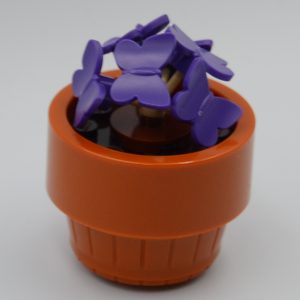
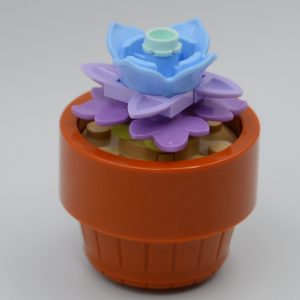
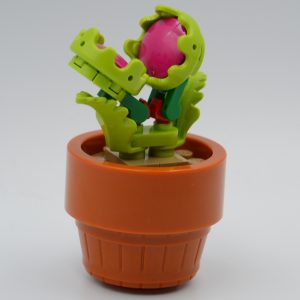
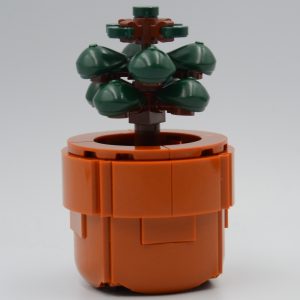

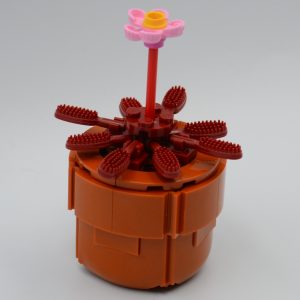
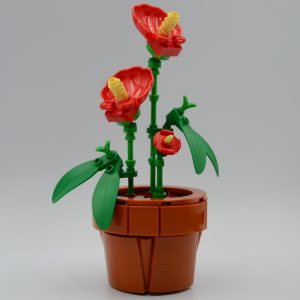
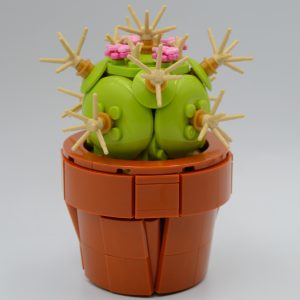
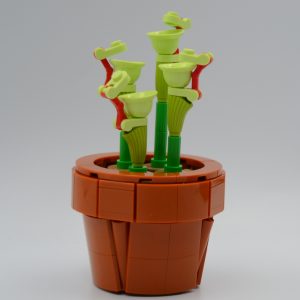
Sadly, I’m still of this opinion after having built the set. The False Shamrock only takes 6 building steps in the instructions, including the pot. The Pincushion Cactus with 34 building steps is the most advanced when judged in the amount of building steps. And with the repetition in the pots, most of this set wasn’t very interesting from a building perspective.
Comparing the 9 models to pictures of the real life versions of these plants, some of them could have been represented better by going bigger.

Maybe 5 slightly bigger plants with some more variation in sizes would have been a choice I would have preferred. That would however also make it less of a desirable parts pack so there’s just no pleasing me perhaps.
I did think the building techniques on the biggest pots were really clever and the way a round shape was achieved was very satisfying. Previously I had my doubt about the need for a 1×2 SNOT brick with a centered stud on the side (part 86876). It felt to me a technic brick with pin could achieve the same. In this set however it’s used in such a way that really shows the neccessity of having this part as well.
Display-ability
Despite my criticism on the comparison between the real life plants and this sets, it does look rather cute. And thankfully they won’t expire and look dreary if you forget to water them.

The NPU choices like hats and butterflies give them a compelling look and this set might be acceptable when displayed in the house for non-AFOL partners. I can totally see this set being just as popular as earlier botanical sets and have a broad appeal to new to LEGO fans.
The Cost
Just the set itself, displaying the 9 plants in your home seems worth the RRP of €/$49.99 or £44.99 to me. It looks nice and compared to other botanical sets in the same price bracket there’s enough value for me.
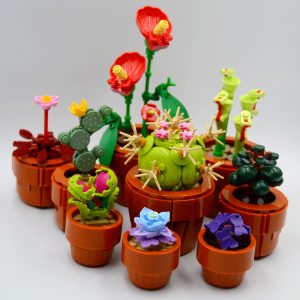
A simple Price Per Part analysis will be quite positive with 758 pieces, with less than 7c PP. However, I tend to judge more on how useful parts are to me and my MOC’s. And like I tried to show in the parts section of this review, there’s a lot to appreciate and an extraordinary value in all the rare and new parts. Even though I ended up finding it for €38.99 at a local retailer, I was already considering buying it at the regular price. To be honest, I’m also considering picking up a second one.
So I’d say: this is a fair priced set, well worth the (RRP) cost. As always, be on the lookout for a better deal because it might save you a bit.
So what do you think of this set? Have you bought and built the set already? Or are you convinced after reading this review. Share your thoughts in the comments!
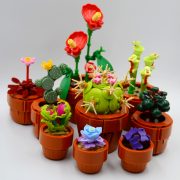
Icons Botanical Collection Tiny Plants 10329
This is not a builders' set. The builds are very repetetive and most of them don't require a lot of interesting building steps. It's a nice activity for 1-3 people who don't regularly build. It is however a great parts pack for MOC builders for a very reasonable price.
Review
Thank you
Your Review is appreciated
What is your reaction?
 YES!
YES!
 I like it
I like it
 It's OK
It's OK
 Not Sure
Not Sure
 No!
No!







